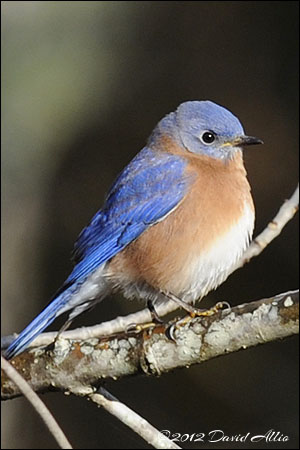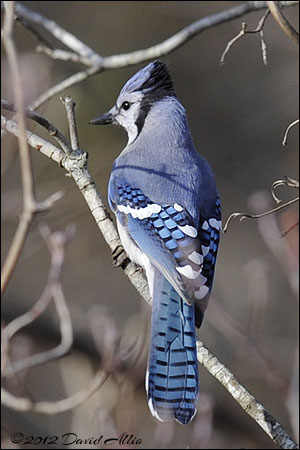Wildlife Photography, in general, and specifically Bird Photography are not something that I practice a lot. Flowers blowing in a breeze and bees working those flowers are difficult. Birds just increase the challenge because of their size-to-distance ratio. Most birds in the wild are small compared to the distance they attempt to maintain from people.
Bird Photography is one of the many sub-specialties of photography. Professional photographers in that concentration use a variety of tools, including pre-set cameras with motion sensors or radio transmitters to remotely release the shutter. Birders also use a significant amount of rigging and mounting brackets for camera positioning. Many use flash to allow for greater depth of field than existing light and to ‘freeze’ the motion of the subject. Patience also plays a big role in successful bird photography.
In my case, after sleeping in on Black Friday (thankfully no shopping malls for me today), a glance out the western windows revealed a variety of blue birds flying around and perching in the trees. There are usually a few birds in the nearby woods, commonly wrens and cardinals, but this morning was a blur of dozens of blue birds.
My set-up for this photo excursion required an extra layer of clothes for the chilly morning, a Nikon D3 camera, and a Nikkor AF VR 400mm f/2.8G IF-ED lens on a monopod. The lens, recently cleaned thanks to Berrie Smith and Nikon Professional Services, and remounted, thanks to wonderful customer service and specialty replacement bolts from Carson’s Nut-Bolt, and Tool Company, was ready for the morning task.
Most birds seem to be wary of cameras and long lenses. So the moment I appeared outside, they disappeared. At least they flew out to trees at what could be presumed was a safe distance. Usually, they will out-wait me. But, this morning a few intrepid birds quickly returned to closer limbs. Lucky me, as it was chilly outside, even with layers.
The Eastern Bluebird Sialia sialis was the first to get close. The exposure calculation for that photograph was ISO 400, with an aperture of f/5, and a shutter speed of 1/1250th of a second.
Next came the Blue Jay Cyanocitta cristata. The exposure calculation for that photograph was ISO 400, with an aperture of f/5, and a shutter speed of 1/640th of a second.
Now I have a couple of distinct blue birds to add to my list of bees, ants, butterflies, and green frogs as wildlife stock photography from this past year. Art may not be all about pretty pictures, but what’s not to like about some of God’s beautiful blue birds in morning light and their natural setting?


You must be logged in to post a comment.